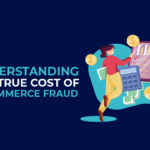Creating new ways to buy and sell goods online creates new avenues for financial fraud. As the Metaverse grows, it presents unique opportunities for fraudulent financial behavior.
If merchants want to protect their bottom line from lost revenue, they must be aware of how financial fraud in the Metaverse works, and how it poses unprecedented threats.
What is the Metaverse?
The metaverse is a digital economy where users will be able to buy, sell, and create digital and physical goods. Users create avatars which represent their digital identities. Once fully established, users in the Metaverse will be able to do anything they can do in real life.
The Metaverse is quickly gaining buy-in from tech giants. Facebook, recently rebranded as Meta, is banking on the creation of this robust marketplace. Not to mention the other big names (Apple, Epic Games, Microsoft) who are also planning their move to the Metaverse.
With so many high powered organizations plotting their entrance into the Metaverse, merchants must position themselves to best capitalize on this emerging sector. In other words, as far as eCommerce goes, the Metaverse is the way forward. And merchants need to be prepared.
Metaverse fraud risks that merchants should be aware of
Everybody is an imposter in the Metaverse. In light of this, fraud challenges will grow, making merchants vulnerable.
Here are three features of the Metaverse that present serious fraud risk to merchants.
1. Reliance on digital identities
Relying on digital identities presents serious fraud risks to merchants. When creating their avatar in the Metaverse, customers can adopt any identity they want. Their avatar need not bear any resemblance to their offline identity. This makes it even more difficult for merchants to confirm the validity of a customer’s identity.
Of course, Account Takeover Fraud (ATO) already presents a serious risk to eCommerce merchants. But, the Metaverse’s reliance on digital identities presents a unique opportunity for financial fraudsters. This is because – compared to physical cards – digital identities are much easier to forge.
2. Increased demand for a frictionless checkout experience
Online merchants aim to minimize friction during the checkout process to increase the ease of purchase for customers. That is, conversion rates are proportional to how frictionless the check-out experience is.
Usually, the higher the friction at the checkout process, the lower the instance of financial fraud. But, higher friction checkouts often result in fewer sales overall.
Therefore, merchants must perform a delicate balancing act between a low friction checkout process and a high instance of fraudulent transactions.
Buying and selling in the Metaverse complicates this balancing act.
Here’s why: customers desire a frictionless, real-world experience where purchases can be made instantaneously.
But, less friction often means more fraud. Especially when checkouts are embedded within other flows, and customers demand a less structured and unified checkout process.
For example, one time passwords (OTP), a commonly used security feature, are difficult to imagine in the context of the Metaverse, where customers desire full immersion into a real-world experience. Anything that draws them out of the virtual world will cause a poor user experience.
Merchants must be keenly aware of these risks.
3. Elevated complexity of business and payment models
With the shift to the Metaverse, the structure of businesses and payment models will also change. As business and payment models become more complex, eCommerce merchants become increasingly vulnerable to fraudulent behavior.
For example, buy now, pay later is already altering the dynamic environment of online shopping. Not to mention that the rate of recurring physical and digital deliveries is expected to increase. Recurring purchases create a relationship between customer and merchant that lasts longer than the typical checkout experience.
Furthermore, we can expect movement toward usage based checkouts – where customers pay contingent on the amount of a service or good they have used.
With increased complexity comes more opportunity for abuse and confusion.
How merchants can fight financial fraud in the Metaverse
These are just some of the unique risks that will present themselves to merchants in the Metaverse. As new forms of fraud arise, merchants must protect themselves in innovative ways.
One solution is Post-Payment Risk Monitoring (PPRM). With PPRM, merchants fight fraud by monitoring and analyzing risk signals over time. Tracking online payments post-purchase will become essential in the Metaverse. Merchants need to make use of the time between payment and shipping to determine which transactions are actually fraudulent.
Instead of denying all transactions that might be fraudulent, merchants must increase their Know Your Customer (KYC) standards to accurately distinguish fraudulent customers from legitimate ones.
FUGU offers multi-tiered fraud protection that fights fraud at multiple places in the transaction life cycle. Using risk scoring, we continue to analyze customers after their purchase. By monitoring and noting any risk signals from the customer, FUGU protects merchants from the financial fraud of the future.

Idan Sharon | Fraud Fighter & VP of Sales

US: +1 650 614 1684 | IL: +972 50 244 5035
Book a meeting | LinkedIn
WhatsApp | Skype | Telegram
Deloitte top innovators | Capterra ![]()
![]()
![]()
![]()
![]()




